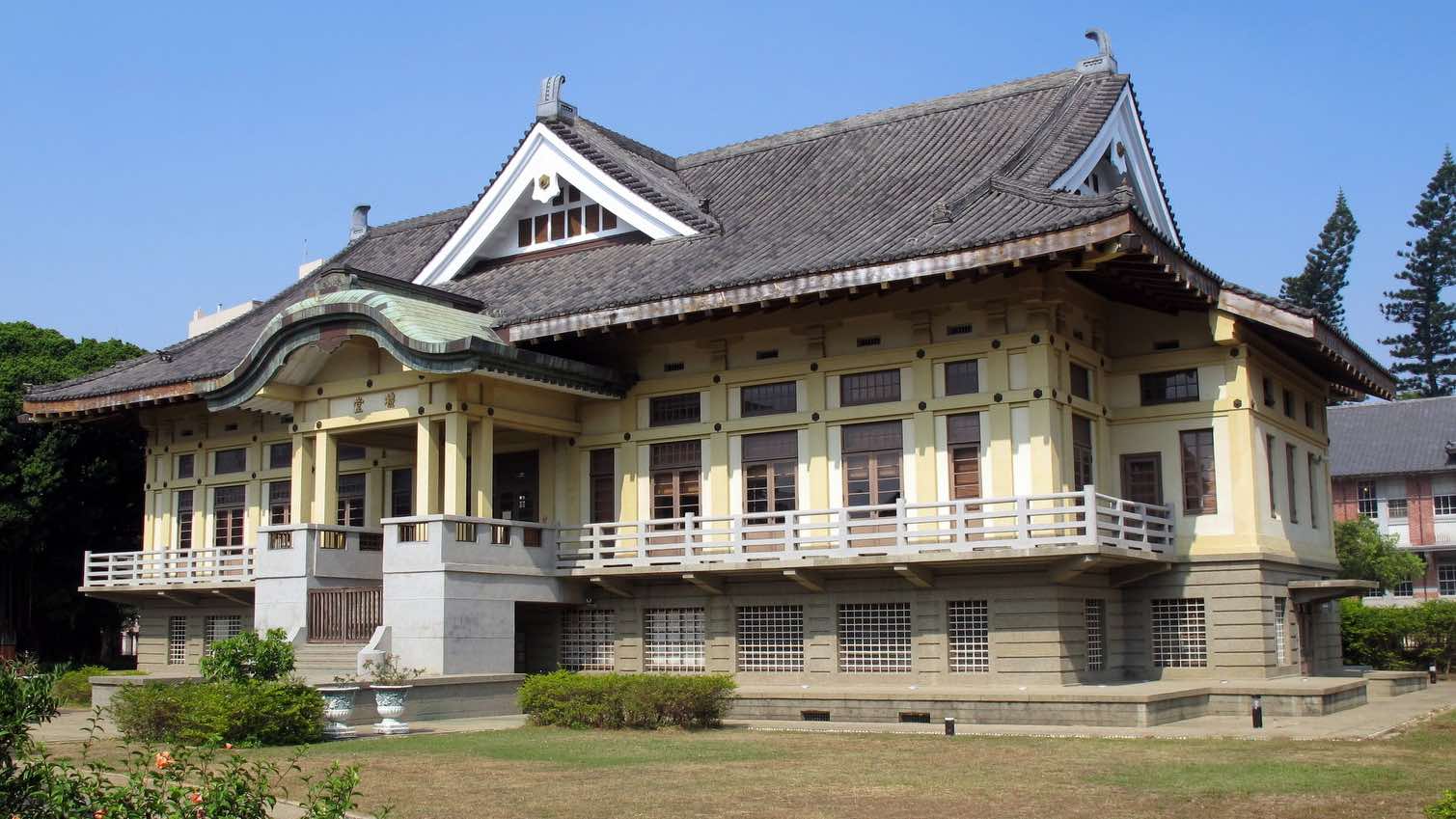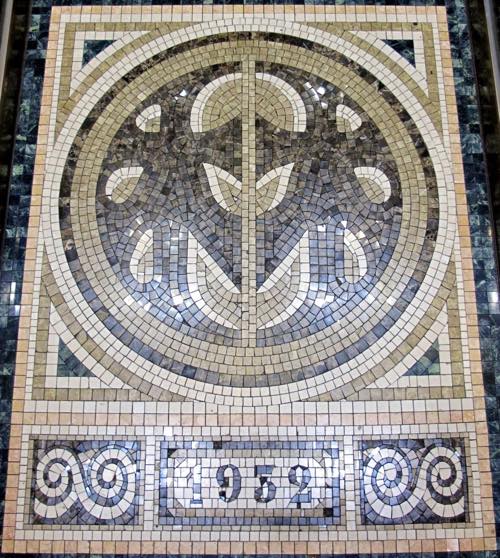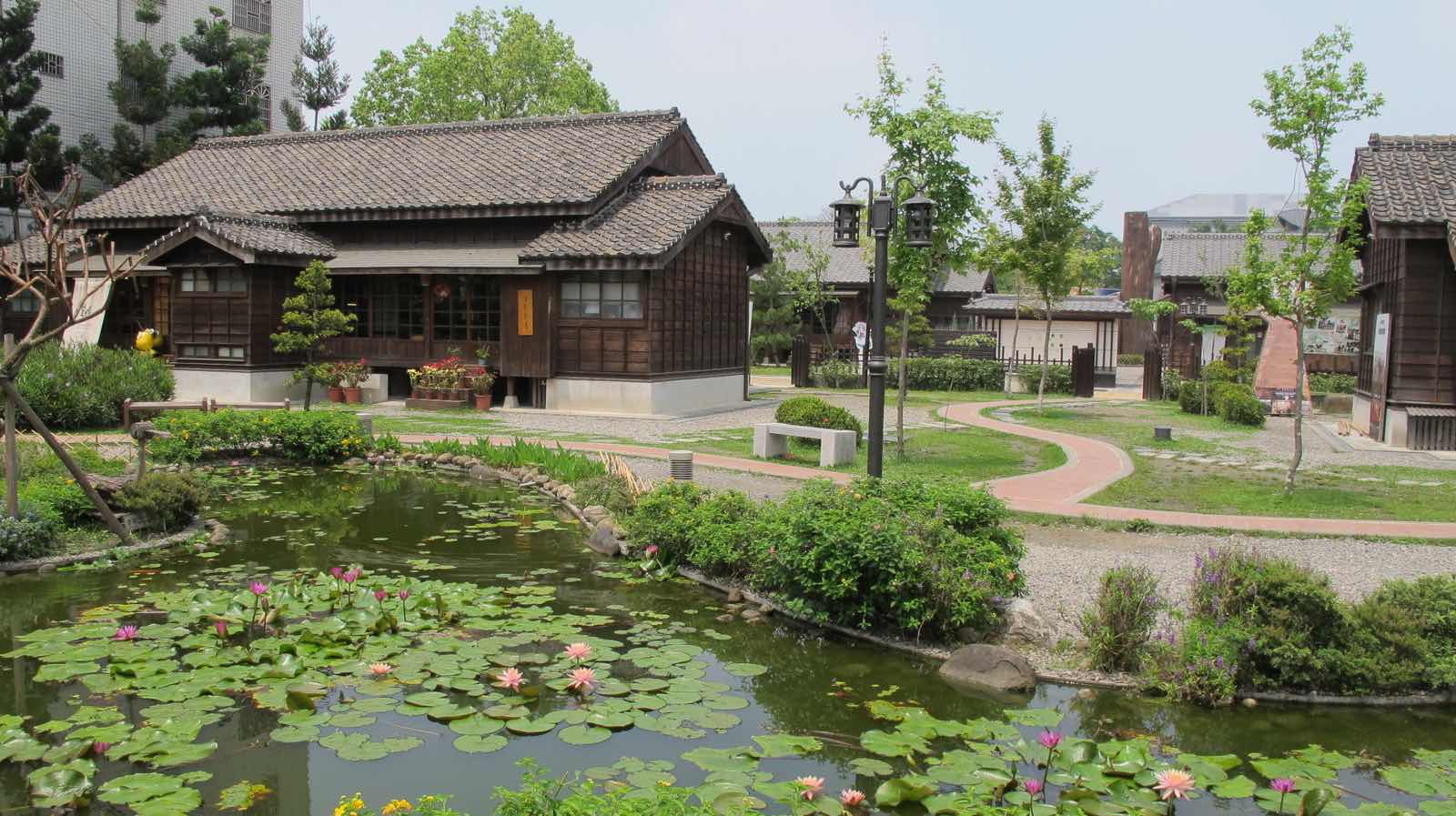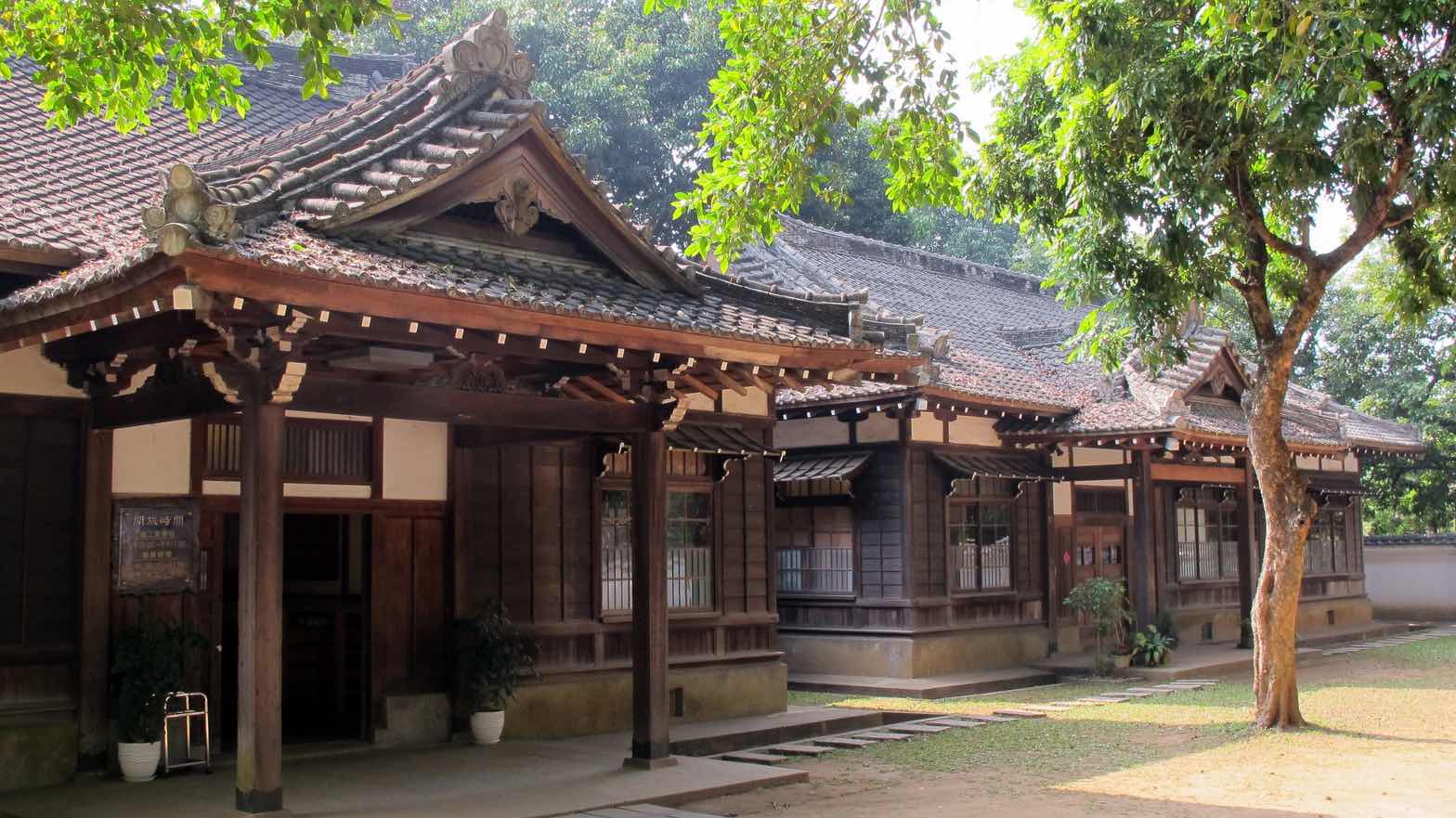
The Old Tainan Martial Arts Academy is now part of a school.
Between 1895 and 1945, Taiwan was a colony of the Japanese Empire. During that half century, the island changed beyond recognition as the Japanese authorities built roads, railways, and schools, while Japanese corporations invested heavily in industries such as sugar and power generation.
Despite World War II air raids and the breakneck growth of Taiwan’s cities since the 1950s, a considerable number of Japanese-era buildings survive throughout Taiwan. Many of these structure were built to last, and also built to impress the colonised people. Magnificent governmental buildings were intended to display Japanese authority; they were dubbed ‘soldiers in civilian clothes’.
Japanese Landmarks in Tainan

The mosaic lift floor in the Hayashi Department Store.
Although many of Taiwan’s best known Japanese-era landmarks are in Taipei, several exist in the south. Tainan is synonymous with fabulous temples and quaint alleyways, yet tourists often leave equally impressed by the city’s Japanese colonial-era architectural assets.
For some visitors, the first Japanese building they’re likely to encounter is the railway station. Built in 1936, it once housed both a restaurant and a hotel. Even though the rail line itself will soon be relocated underground (by the end of 2024, if all goes to plan), the station itself will be preserved. In 2016, the authorities budgeted NT$158 million (US$4.7 million) for repairs and renovation work.
Substantial Japanese-style buildings can be found on the campuses of National Cheng Kung University, Tainan First Girls Senior High School, and Tainan Second Boys Senior High School.
However, the greatest concentration and most interesting examples are found in the city centre, within walking distance of the what’s now the National Museum of Taiwan Literature. The museum is housed in what used to be Tainan’s city hall. It’s a splendid 1916 Baroque-style edifice notable for its mansard roof.
The museum is on the south side of a major roundabout. Close to the north side, there’s a disused meteorological station which is not only over a century old but also unique in terms of shape. Locals dubbed it the ‘eighteen-sided tower.’ It has also been called ‘the pepper pot’ on account of the white cylindrical tower that forms its upper floor. The weather station was also used for astronomical observations, an activity long since made impossible by light pollution. Inside, you’ll find a small museum which displays old meteorological instruments and seismographs.
Between the 1980s and 2014, the now-bustling Hayashi Department Store was a boarded-up, decrepit hulk. Built in 1932, it was the first building in Taiwan to be equipped with an elevator; the lift is very small by modern standards, but has a mosaic floor. On the roof, you’ll see the remains of a Shinto shrine, as well as damage caused by American bombers in 1945. The interior is now divided among coffee shops and businesses selling upmarket souvenirs.
Probably the single most beautiful Japanese-era building in the city is the Old Tainan Martial Arts Academy, beside the narrow street which separates the Literature Museum and Confucius Temple. It’s a voluptuous piece of classical Japanese architecture. The original was erected in 1936 as part of Tokyo’s efforts to ‘Nipponify’ its colony and instill the samurai ethic. Because the building now serves as an elementary-school auditorium, it’s usually closed to the public.

Restored dormitory buildings in Hinoki Village.
Japanese Relics in Chiayi
Chiayi — which many travellers treat as a staging post when heading to/from Alishan — is much smaller than Tainan, yet has a good share of Japanese architectural relics. Currently very popular with visitors from all over is Hinoki Village, also known as Cypress Forest Life Village. Many of the 28 buildings here were originally dormitories for forest-management officials and their families. The most attractive, however, is a 1914 cream-colored former clubhouse with Tudor architectural elements. In addition to being photogenic, the village is a good place to stop for a coffee or an ice cream.

Chiayi City J18 Historical Relic Data Museum used to be part of a Shinto shrine.
A sublime leftover from the Japanese occupation can be found in Chiayi’s main park. The Shinto shrine that once stood here was demolished long ago, but the shrine’s former office survives in the form of Chiayi City J18 Historical Relic Data Museum. The displays inside the museum won’t occupy you for more than 15 minutes, but the glorious exterior could well be the nicest sight anywhere in this city of 263,000 people.
To visit any of the places mentioned in this article, contact us today and start planning your private guided tour of Taiwan. Our travel experts will tailor an itinerary that matches your interests and fully takes into account your culinary and accommodation preferences.
